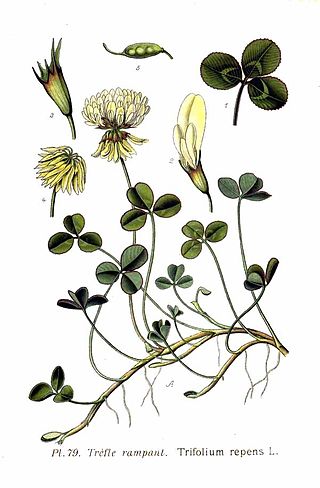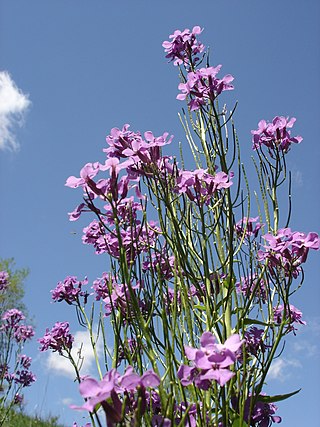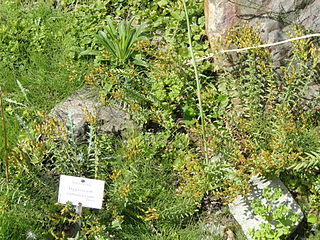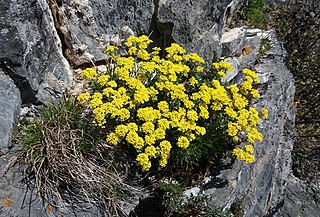
Nepeta is a genus of flowering plants in the family Lamiaceae. The genus name, from Latin nepeta (“catnip”), is reportedly in reference to Nepete, an ancient Etruscan city. There are about 250 species.

Clover, also called trefoil, are plants of the genus Trifolium, consisting of about 300 species of flowering plants in the legume family Fabaceae originating in Europe. The genus has a cosmopolitan distribution with highest diversity in the temperate Northern Hemisphere, but many species also occur in South America and Africa, including at high altitudes on mountains in the tropics. They are small annual, biennial, or short-lived perennial herbaceous plants, typically growing up to 30 centimetres (12 in) tall. The leaves are trifoliate, with stipules adnate to the leaf-stalk, and heads or dense spikes of small red, purple, white, or yellow flowers; the small, few-seeded pods are enclosed in the calyx. Other closely related genera often called clovers include Melilotus and Medicago.

Matthiola is a genus of flowering plant in the mustard family Brassicaceae. It is named after Italian naturalist Pietro Andrea Mattioli (1501–1577). The genus contains about 50 species of annual, biennial and perennial herbaceous plants and subshrubs. Many are cultivated for their heavily scented, colorful flowers.

Alcea is a genus of over 80 species of flowering plants in the mallow family Malvaceae, commonly known as the hollyhocks. They are native to Asia and Europe. The single species of hollyhock from the Americas, the streambank wild hollyhock, belongs to a different genus.

Hesperis is a genus of flowering plants in the family Brassicaceae. Most are native to Eurasia, with several endemic to Greece and Turkey. Many plants of this genus bear showy, fragrant flowers in shades of purple and white. One of the more widely known species is the common garden flower Hesperis matronalis. The genus name Hesperis was probably given because the scent of the flowers becomes more conspicuous towards evening.

Scorzonera is a genus of flowering plants in the tribe Cichorieae within the family Asteraceae.

Isatis is a genus of flowering plants in the family Brassicaceae, native to the Mediterranean region east to central Asia. Its genus name, Isatis, derives from the ancient Greek word for the plant, ἰσάτις. The genus includes woad. Due to their extremely variable morphology, the Asian species in particular are difficult to determine; the only reliable diagnostic feature is the ripe fruit. They are (usually) biennial or perennial herbaceous plants, often bluish and hairless or downy hairy with the upright stem branched.

Aethionema is a genus of flowering plants within the family Brassicaceae. They are known as stonecresses. Stonecresses originate from sunny limestone mountainsides in Europe and West Asia, especially Turkey.

Draba is a large genus of flowering plants in the family Brassicaceae, commonly known as whitlow-grasses.

Alyssum is a genus of over a hundred species of flowering plants in the family Brassicaceae, native to Europe, Asia, and northern Africa, with the highest species diversity in the Mediterranean region. The genus comprises annual and perennial herbaceous plants or (rarely) small shrubs, growing to 10–100 cm tall, with oblong-oval leaves. Alyssum flowers are characteristically small and grouped in terminal clusters; they are often yellow or white colored but can be pink or purple.
Aegilops kotschyi is a member of the grass family, Poaceae, native to the Levant.

Pulicaria is a genus of flowering plant in the sunflower family, native to Europe, Asia, and Africa. In North America Pulicaria is known by the common name false fleabane.

Hypericum rumeliacum is a species of flowering plant in the family Hypericaceae, native to southeastern Europe.

Acantholimon libanoticum(Lebanese prickly thrift, غملول لبناني) is a plant in the family Plumbaginaceae first described by Pierre Edmond Boissier. It is native to Western Asia from Turkey to Syria and Lebanon.
Hypericum pubescens is a perennial herb in the Hypericaceae family. It is in the section Adenosepalum.

Noccaea is a problematic genus of flowering plants in the family Brassicaceae, native to temperate areas of western North America, southern South America, northern Africa, Europe and Asia.
Sobolewskia is a genus of flowering plants belonging to the family Brassicaceae.
Pseudocamelina is a genus of flowering plants belonging to the family Brassicaceae.

Odontarrhena is a large genus of flowering plants in the family Brassicaceae. They were originally a separate genus and then were amalgamated into the Alyssum genus, but then morphological and molecular evidence has reseperated them. Some of the genera are nickel (Ni) hyperaccumulators.














